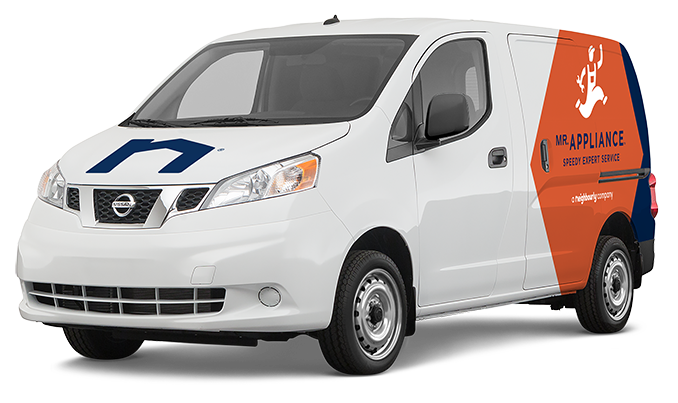Frequently Asked Questions
Frequently Asked Questions
-
They won't cause any damage to your dryer, but they can lead to clogged lint filters or coating of your moisture sensor. If you use them, be sure to clean the screen of your lint filter and wipe off your sensor.
-
On average, a large load of clothes should only take around 45 minutes to dry. If you are noticing that your clothes are averaging more than 1 hour to dry, you might want to have your dryer vents checked.
-
The smell is caused by the grease and food your oven is burning off. When possible, it is a good idea to create additional ventilation in the kitchen when cleaning your oven, perhaps by opening windows.
-
The glow is caused by a 'glow-bar' igniter used to ignite the gas in your oven. It glows as it is heating up, but unless it reaches the correct temperature, the gas valve will not open and gas will not ignite-and your oven will not heat up. If your igniter is not heating up properly, you may need to replace it.
-
It is very possible that you are using more detergent than is necessary for the load size you are washing. Double check the detergent instructions to ensure you are using the correct amount. If you want to remove the necessity for laundry detergent, call and schedule a pureWash® system installation.
-
Your washer is actually combining hot and cold water to create the warm water and during certain times of the year cold water gets colder. So, during the colder months, you can expect your warm cycle to run cooler. You might also want to check to see if there is anything blocking the hot water.
-
Yes, you can, as long as there is not a metal grid on the back of it. If there is, you should make sure you leave 1" of space between the unit and the wall.
-
The best option is to take it to your local landfill. However, the law does require that you have the refrigerant evacuated first. Your local appliance repair company should be able to do that for you.
-
Only if it is a self-defrosting refrigerator and the temperature in your garage drops below 10 degrees Celcius. Then, it is possible that the oil could thicken and cause premature compression failure.
-
If you are comparing having your existing machine repaired or replacing it with a machine that is comparable in price with what you paid for your machine 10 or so years ago, you will not be making a valid comparison. The equipment is neither similar in quality nor durability for the same price. If you were to merely replace your existing household appliance with one that costs about what you paid a decade ago, you'll be repairing or junking the new machine every three to four years. You'll either have to pay more up front for a new, high-quality machine that will give you another 10 years of trouble-free operation or you pay less up front for a low-end machine and then pay-as-you-go for repairs.
-
When asking "How much is a new one?" you need to consider both the quality of appliance you can afford as a replacement and the option of having your existing appliance properly repaired by a competent professional. We can diagnose and evaluate your appliance to determine if it's in your best interest to repair or replace it and make a recommendation accordingly. Also, another cost associated with buying a new appliance is the "aggra-dollars." That is, the aggravation and time spent that goes along with shopping for a new appliance: having it delivered, getting it installed and disposing of your old one. If you've experienced this joy recently, you'll realize that the aggra-dollar factor can be costly.
-
Retail prices for major household appliances have stayed flat over the past 15 years even though manufacturing costs and inflation have risen steadily during that time. Manufacturers today continue to offer low prices on their lower quality appliances and then offer their choice lines of appliances at a higher price point. So, where $400 would buy you a top-quality washer 15 years ago, that same $400 today would only buy you a low-end machine that you'll be throwing away or repairing every 3-4 years. What has changed? The difference between the $400 washer of today and yesterday (or the $300 dishwasher or the $350 oven range, or the $300 dryer, or the $600 refrigerator, etc.) is in the internal components used in the machines. The lower end machines today are constructed of lower quality materials than similarly-priced machines 15 years ago. In part, this is attributable to the globalization of manufacturing with various internal parts made at different plants all over the world. While this has allowed manufacturers to cap retail prices for low-end machines over the last 15 years, it has also contributed to a degradation of quality. Therefore, the high-quality appliances you'd buy today command a correspondingly higher price tag, realistically reflecting the increased costs of manufacturing for high quality machines. You should expect top-end appliances to retail for approximately: Dishwashers - $900 Washers - $1,100 Dryers - $600.
-
Believe it or not, an appliance can be bumped or "hum" unplugged. We find this to be a common issue.
-
Mr. Appliance repairs and services all major household appliances...regardless of brand.
Ask a Question
Thank you for contacting us!
A representative from our office will get back to you shortly.
Your message was not sent - please try again.
This area is not currently serviced by Mr. Appliance.
Find a Mr. Appliance Near Me
Let us know how we can help you today.
